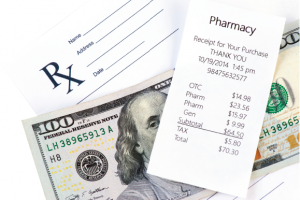
Sherry Yates Young / shutterstock.com
A patient with rheumatoid arthritis (RA) comes to your office and needs a medication. You prescribe it, and the patient’s insurance plan covers it. The patient begins the medication and slowly but surely feels better.
Prescribing drugs for a patient should be this simple but rarely is, thanks to the high cost of drugs and the variance in what insurance plans or Medicare cover.
Rheumatologists face questions about drug costs every day, and they are not always easy to answer. “Not infrequently, patients will ask if a drug is covered by their formulary,” says Allan Gibofsky, MD, Hospital for Special Surgery, and professor of medicine, Weill Cornell Medical College, New York. “When I make a drug decision, I may find out from the patient or staff that the drug is not covered, and we then look to prescribe something else. Sometimes that’s acceptable; sometimes it’s problematic, and we have to go through the appeals process.”
Drug-cost questions are particularly common for branded and newer drugs that treat RA, psoriatic arthritis and lupus, says Jonathan Greer, MD, president, Arthritis and Rheumatology Associates of Palm Beach, Palm Beach Gardens, Fla. However, even traditionally lower cost disease-modifying anti-rheumatic drugs (DMARDs) have had recent price increases and shortages, says Elizabeth Perkins, MD, Rheumatology Care Center, Birmingham, Ala.
Private insurance and Medicare patients each come with their own drug-cost issues that rheumatology practices must analyze and help manage.
The maze of prior authorization, insurance formularies and ever-changing drug costs has led rheumatologists to dedicate staff members to research the issue and keep patients up to date. It’s also led to frustration when rheumatologists get caught in the middle. Dr. Greer has had patients lash out at him when they haven’t received their medication. He checks in with staff, only to find out the prescription is still in process with the insurance company. “It’s very challenging,” he says.
The need for prior authorizations—and the paperwork and time they involve—has become more common in Dr. Greer’s experience.
The entry of biosimilars into the drug market adds a viable, but not always straightforward, option to lower drug costs, rheumatologists say. “So far, two infliximab biosimilars are available to rheumatologists, and they offer about a 15% discount compared with the bio-originator drug, Remicade,” says Angus B. Worthing, MD, FACP, FACR, Arthritis & Rheumatism Associates in the Washington, D.C., area, and chair of the ACR’s Government Affairs Committee. “It’s not clear that insurers are passing that savings on to patients, and some aren’t even covering the biosimilar. Clearly, we have a long way to go before patients realize savings.”



